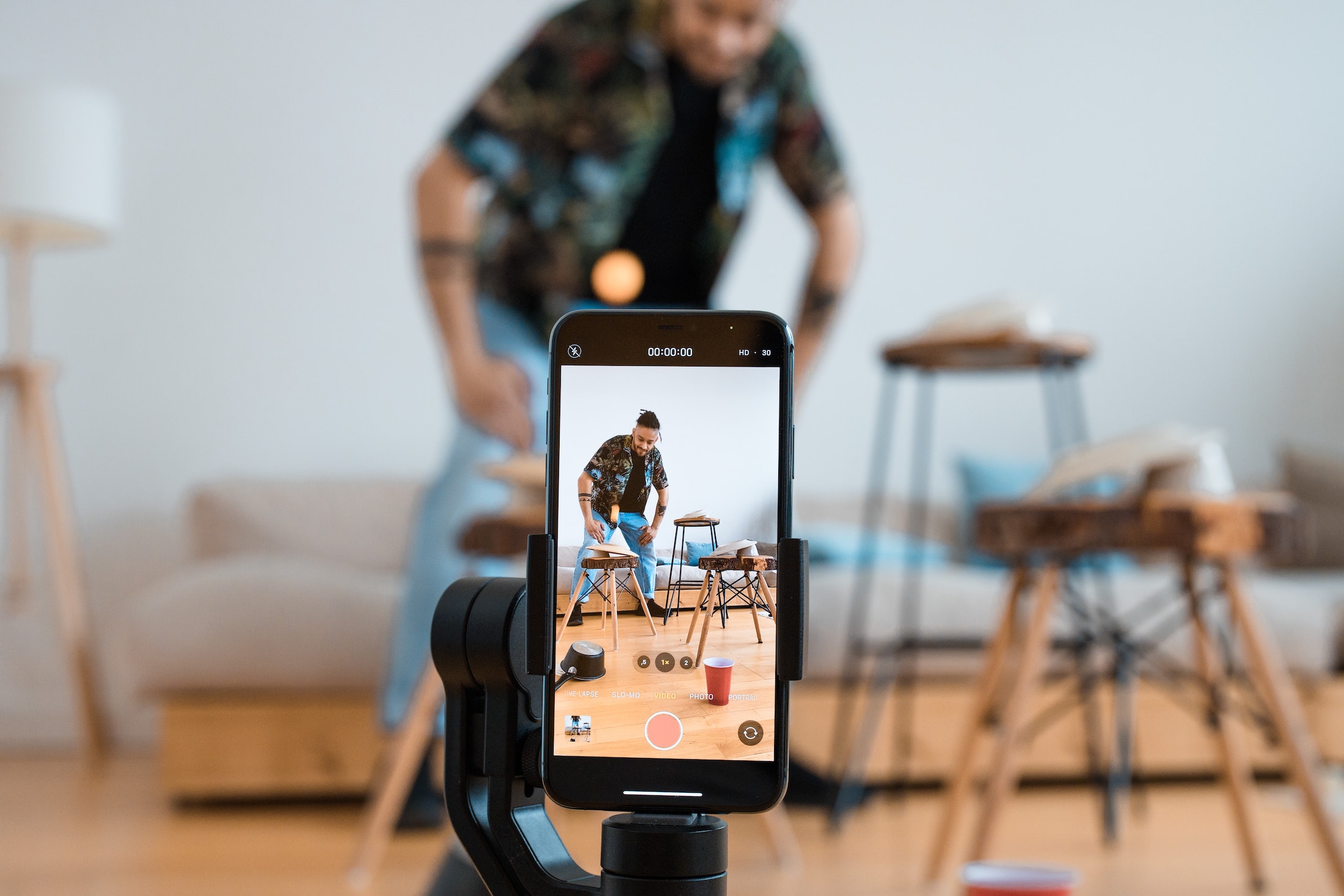Deciding which social media platform to use for your brand can feel overwhelming. Most experts agree that choosing one platform and doing it well is better than trying to build a following on multiple platforms at once. So which one should you choose?
In this article, we will deep dive into two of the most popular social media apps for brand marketing: TikTok and Instagram.
All Things Instagram
Unless you’ve lived under a rock for the last ten years, you probably know about the social media giant Instagram. Even if you don’t use it, you likely know someone who does, and it’s impossible not to come across content from Instagram elsewhere online.
What Is Instagram?
Instagram is a free photo and video-sharing social media app. It is available for both iPhone and Android and is accessible directly through the browser. Facebook bought Instagram for $1 billion in 2012 and is now part of Meta, Inc.
Until a few years ago, Instagram was best known for leveraging numerous filters to allow users to improve the quality of their pictures before sharing them to a feed.
The app has recently become known for its “stories” and Instagram Reels.
Instagram Stories revolutionized the type of user-generated content that users shared online. Stories are only one minute long and disappear after just 24 hours. Stories make users more likely to share offhand, spontaneous moments rather than highly-curated visual content.
The Instagram Feed is still the place for high-quality content. Successful Instagram accounts use the feed to post beautiful, on-brand visual content (primarily photos.) Scrolling through a great Instagram feed has been likened to reading an expensive magazine like Vogue.
Instagram Reels are short, entertaining videos that allow users to express themselves and their creativity. Reels are longer and more permanent than stories and can be added to a feed. While stories and the feed allow for posting photos and videos, Reels are intended to be video-only.
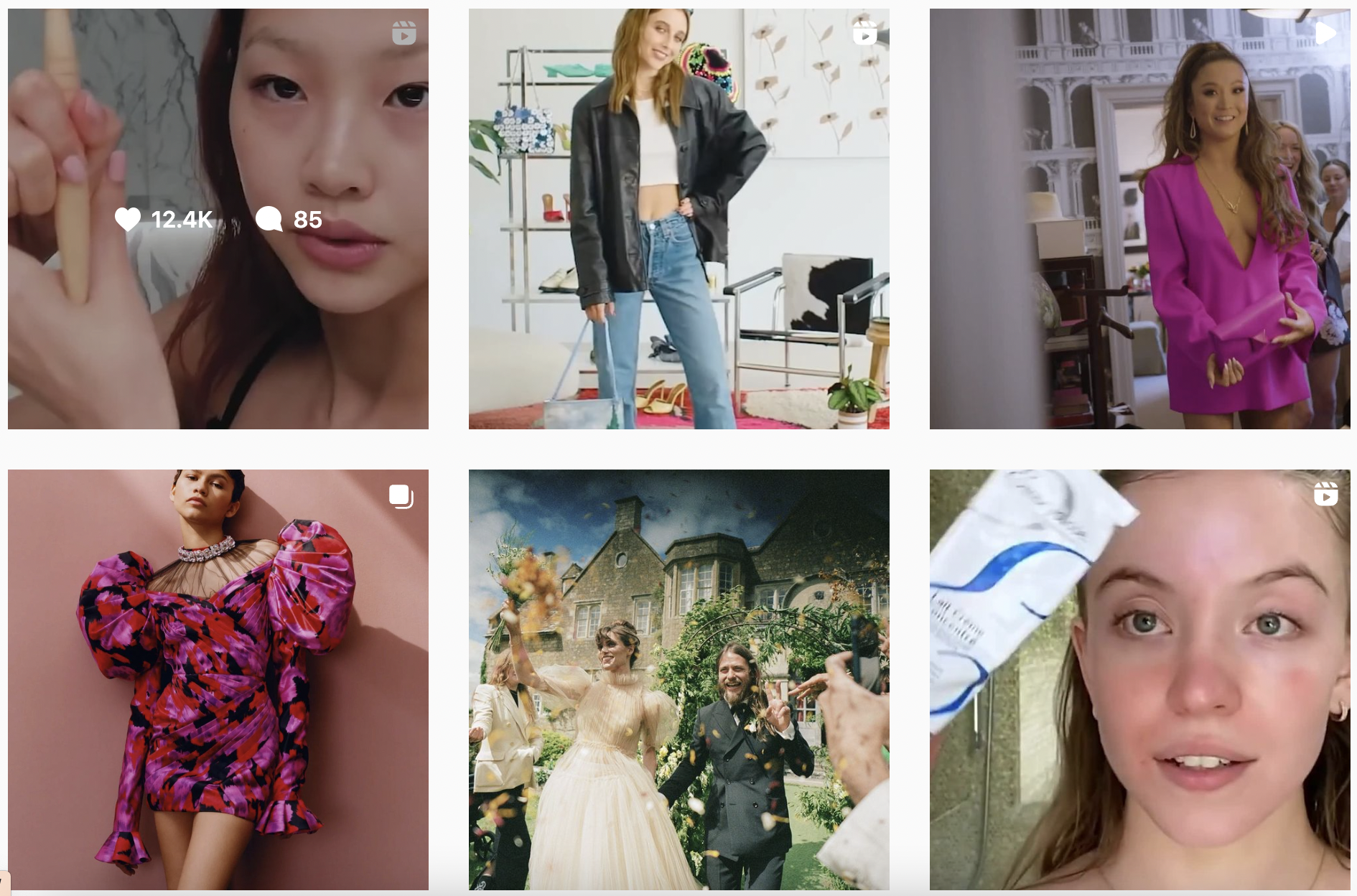
Image source: www.instagram.com
Marketing on Instagram
Instagram is a powerful marketing platform when used correctly as there is plenty of opportunity for affiliate marketing, influencer marketing, and, of course, content marketing. Users today are savvy and expect a lot from the brands they love. Your content must be engaging, high-quality, and the type of content that educates and informs users about a topic they are interested in.
Community
Community is huge on Instagram. It’s not enough to simply post pictures and videos – you need to engage with individual users on the platform and create a dialogue. Successful Instagram accounts understand that the power of the platform resides in creating connections with followers through comments, reactions, polls, and questions.
Niching Down
Today, much of the power of marketing on Instagram comes from finding your niche and creating content that appeals to that niche. Users find topics they’re interested in through hashtags, so effective use of hashtags is crucial.
Micro-Influencers
One fascinating recent trend that has developed on social media is “micro-influencers.” Micro-influencers are accounts with more than 1000 and fewer than 10,000 followers. Rather than trying to broadly appeal to a massive, generic audience, micro-influencers have smaller, more targeted audiences.
Micro-influencers create targeted content for an audience that cares about that content. If you choose to work with a micro-influencer, you can be sure that your content will end up in front of a small but passionate group of users who will engage with it.
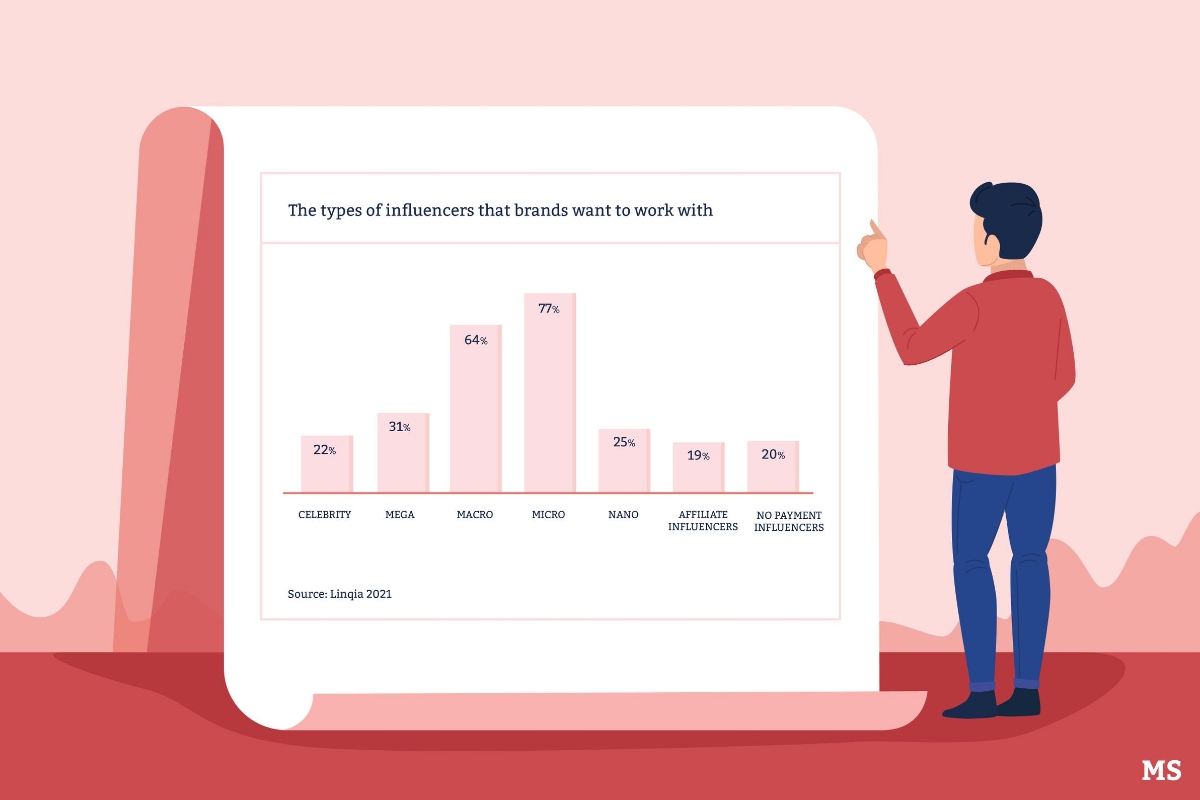
Image source: www.marketsplash.com
Instagram Pros and Cons
There are many great reasons to use Instagram, but the app does come with a few caveats.
Pros
- Multiple content types (feed, reels, stories) provide numerous advertising options to reach users in different ways.
- Used by two billion people worldwide.
- Ads on Instagram are non-intrusive and blend right into a user’s feed, so users are unlikely to become annoyed by them.
Cons
- Timing of posts can be critical to getting visibility, so you need to analyze your user base to understand when your audience is active.
- Consistency is critical—posts need to happen regularly and at an expected cadence
A Deeper Look Into TikTok
TikTok is a relatively new platform that was originally launched in China in 2017. The TikTok app took off globally after TikTok’s parent company ByteDance merged with another video app called musical.y to create a massive video community amongst a mostly younger audience.
What is TikTok?
TikTok is a social platform that centers around short-form video content. Users create and share videos on any topic, usually in a very spontaneous manner.
Unlike Instagram, TikTok focuses solely on video, although it is possible to upload videos with photos in them.
The core of TikTok is the For You Page, where users find new content via an algorithm that analyzes their likes and dislikes and attempts to present them with content they will enjoy.
TikTok users can utilize numerous effects, stickers, and sounds in their videos, but TikTok videos tend to be unpolished and less high-quality than Instagram posts. Users on TikTok expect content to be more “raw” and “authentic.”
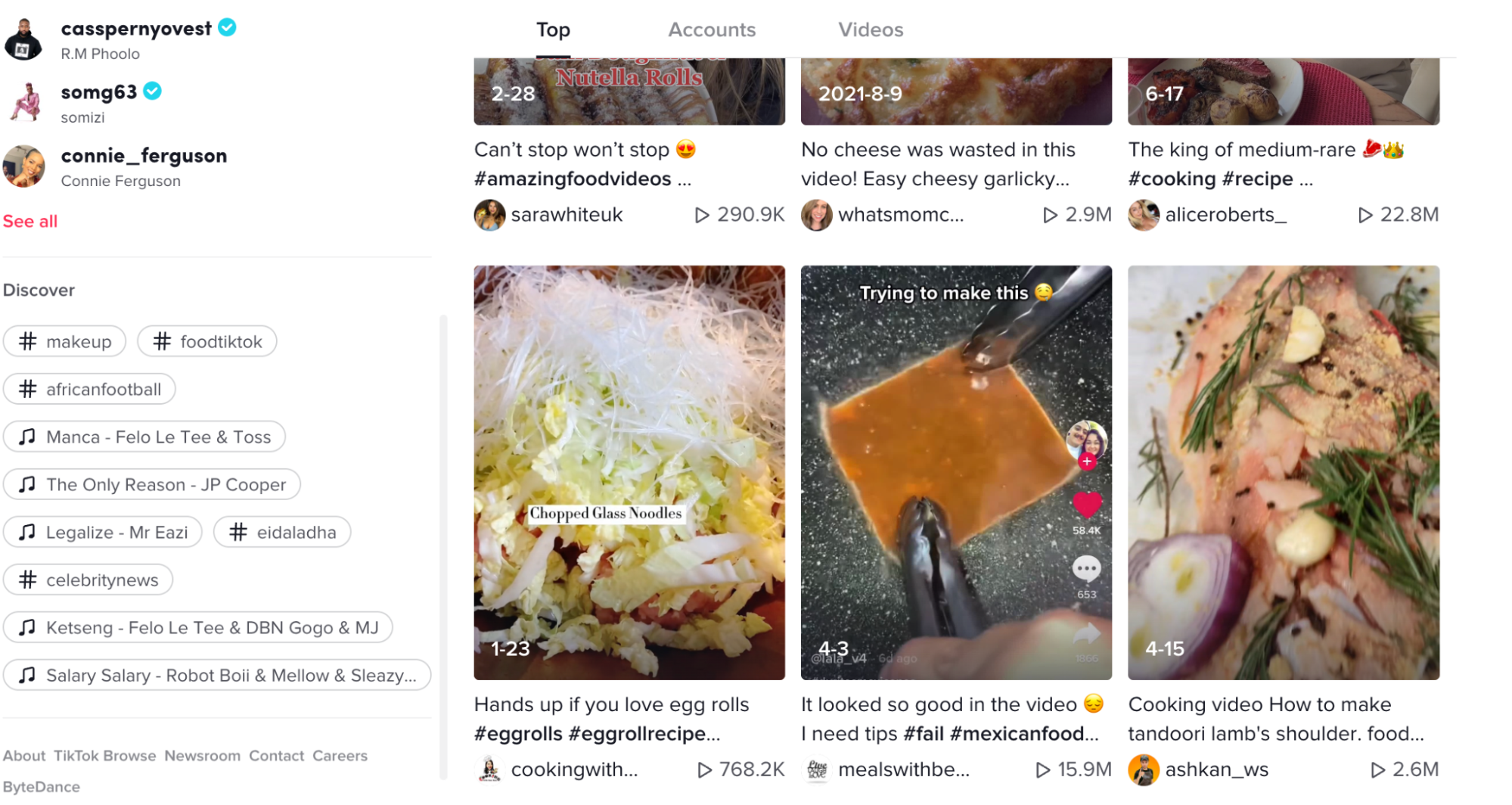
Image source: www.tiktok.com
Marketing on TikTok
Using TikTok for business is similar to marketing on Instagram in some ways and very different in other ways. You still use hashtags to get your content in front of the right audience. Niching down and finding a community are key elements of successful TikTok marketing, as they are on Instagram.
Community engagement is not as important on TikTok as on Instagram, but you still need to engage with the community through comments, reactions, and likes. Communities on TikTok are quite niche, with specific TikTok hashtags like #Booktok and #TikTokFashion driving sales from these targeted audiences.
Unlike Instagram, paid ads are not as well-received on TikTok. TikTok advertising is about making TikTok videos, whereas marketing on Instagram often means creating and pushing paid advertisements.
Trends are a huge component of success on TikTok. Users jump on trending sounds and video effects in the hope that their video might go viral on the platform, resulting in a spike in views and new followers.
TikTok Pros and Cons
As with Instagram, there are benefits and pitfalls to including TikTok in your overall social media strategy.
Pros
- TikTok videos can be unpolished and raw, so there’s no need to spend a lot on expensive equipment like lighting and makeup.
- There are already over one billion people on TikTok, and the app is still growing fast.
- Timing is not so critical to content success, and you can re-release duplicate videos without spamming your followers.
Cons
- TikTok ads are not always well received, so it’s better to stick to making entertaining content instead.
- TikTok works best when you upload at least once a day for at least a month to begin with. Many users upload two or three times a day.
A Direct Comparison Of TikTok And Instagram
If your business is new to social media, you may be wondering which platforms are worth pursuing and which will give you the highest return on your time and resources invested. Both TikTok and Instagram are powerful platforms for connecting with users if you use them correctly.
An in-depth look at the major features of the two platforms can help you determine which app is right for your advertising.
Features
Feed
Both apps feature a feed where users can see their most recently available content. TikTok generates this feed almost entirely using its AI algorithm, while Instagram relies more on cues from other users to determine what to show in the feed.
The TikTok For You Page features mostly new content from users that a user isn’t following, whereas an Instagram feed contains mostly content from people that a user is following.
Ads
Both apps allow brands to create targeted advertisements. These ads appear in the users’ feeds as they scroll, with a note that the post is a paid advertisement. Targeted ads on Instagram have a noticeably wider reach and perform better than TikTok ads.
When looking at ads for TikTok vs. Instagram, ads in Instagram Reels show up to three times the reach and impressions than ads on TikTok. They also show a higher engagement rate and a lower cost per click.
Engagement
On both apps, community engagement is important for success. On TikTok, however, features that support user interactions are less important, as the algorithm shows new content to new users without them explicitly seeking it out.
On Instagram, engagement with the community is more important, as a user is less likely to stumble across your content or be shown your content by the app.
Type of Content
Both apps allow you to post videos, while Instagram enables photo sharing. Both apps place a high value on the video feature functionality and short-form content, for example, Instagram Reels, the For You Page, and Stories.
One major difference between the apps is TikTok’s trending music feature. Trending sounds and dueting and stitching are crucial factors in viral videos on TikTok.
User Demographics
It’s important to understand the demographics of the two platforms to discover where your target audience is. There’s no point posting many TikTok videos if the people who buy your products are on Instagram and vice versa.
TikTok Users
There are currently over a billion monthly active users on TikTok. To put that in perspective, TikTok grew to one billion users in about half the time that it took Instagram to grow that large. TikTok has 50 million daily users in the US.
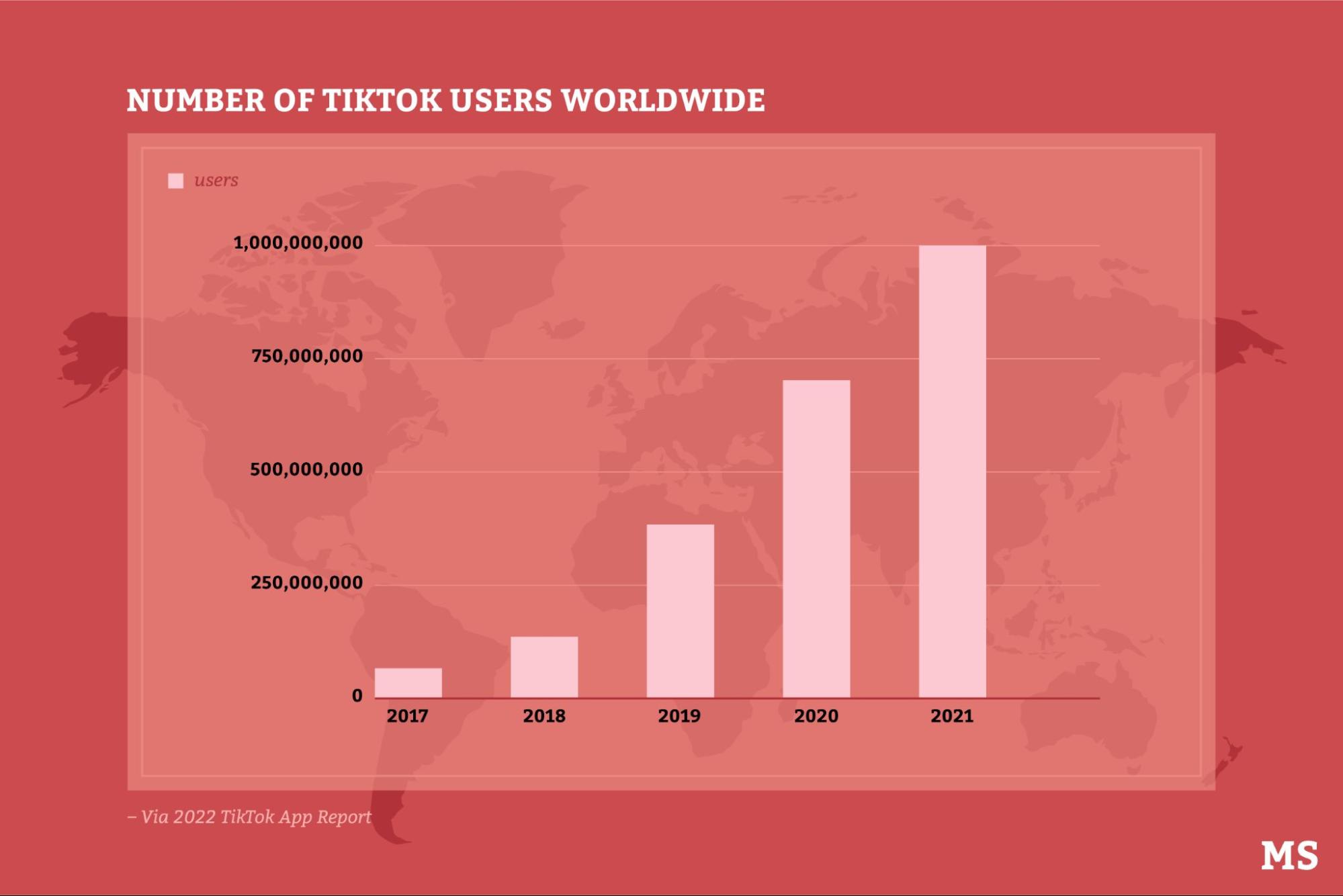
Image source: www.marketsplash.com
Users on TikTok are roughly 57% female and 43% male. Approximately 42% of TikTok users are between 18 and 24. Only 2% of TikTok users are over the age of 55.
Micro-influencers see more engagement on TikTok than on Instagram or any other social media platform. Engagement rates for micro-influencers are about 18% on TikTok, vs. just 4% on Instagram and less than 2% on YouTube.
Instagram Users
There are two billion years on Instagram. Instagram users are split pretty evenly regarding gender but are slightly more likely to be male—about 51% male and 49% female. Users on Instagram tend to skew slightly younger than users on TikTok, with about 60% of Instagram users between 18 and 34. About 5% of users are over 55.
Content
Content performance differs depending on the content you post to which platform. On TikTok, short-form, raw content is king. On Instagram, users still appreciate polished posts.
TikTok Content
Content on TikTok skews heavily toward short-form video content and often trends toward comedic. TikTok videos are shorter and less polished than Instagram posts. Users can get away without wearing makeup, putting on nice clothes, or trying to present themselves in the best light.
Instagram Content
While Instagram Reels and stories have grown in popularity, allowing users to post more spontaneous, casual updates, the feed is still a place for well-curated, high-quality content. The main focus of Instagram is still posting beautiful, polished pictures, so our pro tip is to make sure that your content is optimized for the set Instagram post and story sizes.
Analytics
Analytics are critical to measuring and replicating the success of your content on both TikTok and Instagram.
TikTok
TikTok provides an analytics dashboard broken into three main sections: Overview, Content, and Followers. The Overview tab gives you a high-level look at your follower growth, video views, likes, shares, and profile views over a set period.
The Content tab shows you a more detailed breakdown of how each of your videos performed, including likes, views, shares, average watch time, traffic source, audience locations, and whether or not viewers watched the whole video.
The Followers tab gives you more information about your followers and the community you are building, including where they’re from, when they are active, and how your follower growth has changed over time.
There are also many third-party tools for measuring TikTok analytics, including Brand24, Iconosquare, Analisa, and TrendTok. These tools have various pricing tiers that provide either basic analytic data or personalized recommendations from a team of industry analysts.
Instagram calls its analytics “Insights,” and provides a dashboard on the mobile app to view them. You need to have a business or creator account to view insights. Instagram provides insights on Reels, Feed, and Stories separately, as well as overall insights about your account performance.
There are many third-party analytics platforms available to analyze Instagram content, such as Sotrender. Sotrender is an analytics tool that provides in-depth Facebook and Instagram analytics via AI-enhanced reports.
Experts are available to provide paid content analysis and pull data from prior years, which is not accessible through Instagram’s native dashboard. You can then use these expert insights to drive up your social media growth! Not convinced? That’s fine, they offer a 14-day free trial so you can see the results for yourself.
TikTok vs. Instagram: Final Word
While TikTok and Instagram may seem similar on the surface, they are different apps that require a different approach to find success. Whereas Instagram users have historically appreciated a more polished type of content, TikTok is all about immediacy and authenticity.
TikTok’s algorithm functions differently from Instagram’s and relies less on user input and networking to show users relevant content. TikTok is more forgiving of repeated content, while Instagram engagement is higher for paid ads.
The most important factor to consider in your choice of social media platform is where your audience is.
These days, niching down and targeting small groups of passionate users is the most effective way to do social media marketing, no matter the platform.
